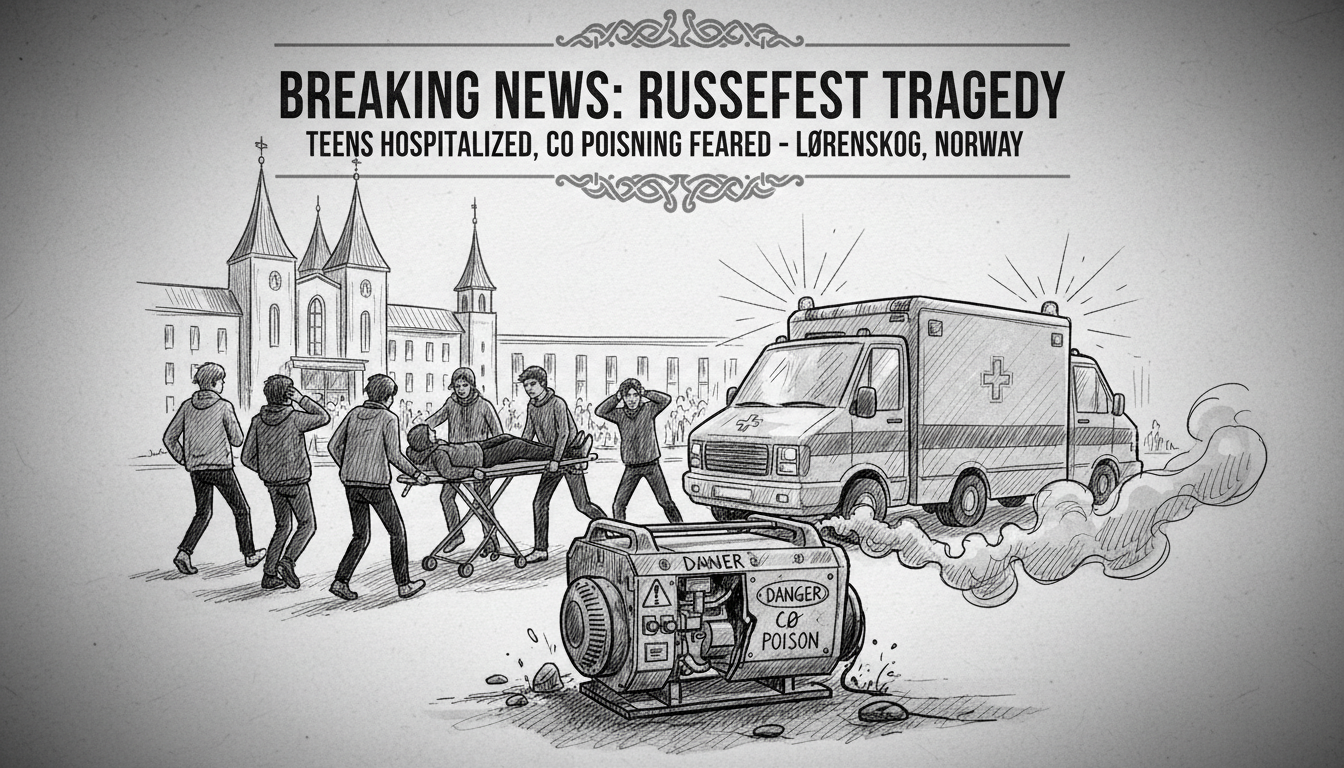Multiple Norwegian teenagers received emergency hospital treatment following a traditional russefest celebration in Lørenskog. Medical officials suspect carbon monoxide poisoning caused the incident.
Local authorities confirmed the teenagers were transported to Akershus University Hospital (Ahus) for evaluation. The incident occurred during a weekend gathering that was part of Norway's annual russefeiring tradition.
Lørenskog Mayor Amine Mabel Andresen addressed the situation publicly. She stated that a diesel generator appears to have caused the health emergency. The mayor urged parents to speak with their children about potential symptoms.
Anyone experiencing possible poisoning symptoms should seek immediate medical attention at emergency care facilities. This advice applies particularly to those who attended the weekend event.
Carbon monoxide poisoning represents a serious risk during outdoor celebrations that use fuel-powered equipment. The colorless, odorless gas can accumulate rapidly in enclosed or partially enclosed spaces.
Norway's russefeiring tradition marks the culmination of secondary education for graduating students. The celebrations typically involve weeks of parties, special costumes, and customized vehicles. These events often include temporary structures where proper ventilation becomes crucial.
This incident highlights ongoing safety concerns surrounding Norway's traditional graduation celebrations. Previous years have seen similar health and safety incidents during russefeiring periods. Authorities continually work to balance cultural traditions with student welfare.
Local emergency services responded promptly to the situation. Their quick action likely prevented more serious health consequences. The exact number of affected teenagers remains undisclosed, though multiple hospital transports were confirmed.
Norwegian health officials emphasize that carbon monoxide poisoning requires immediate medical intervention. Early symptoms include headache, dizziness, and nausea. These can progress to more severe neurological effects without treatment.
The use of generators near living or gathering spaces poses particular risks during Nordic spring celebrations. As temperatures remain cool, participants often seek shelter in vehicles or temporary structures. These spaces can trap dangerous gases without proper airflow.
This incident serves as a sobering reminder during Norway's celebratory season. While traditions hold cultural importance, safety measures must remain paramount. The community now awaits further updates on the students' conditions and any resulting safety recommendations.

